- Home
- Services
- Yacht-Marina and Seaport Contracting Project Activities
- High-Standard Equipment for the Oil and Gas Industry
- Airport Contracting Project and Airport Operations Activities
- Mining Activities Import Export and Sales
- Construction Contracting Project Activities
- Steel Construction Contracting Project Activities
- Renewable Energy Systems
- Plastic and Industrial Raw Material Production, Import and Export Activities
- Agricultural Agricultural Products and Fertilizer Production Import Export
- Import and Export Activities
- Machinery Industry and Technical Equipment Supply Sales and Organization
- Billboard and Advertising Equipment
- Chemical and Industrial Cleaning Materials
- Next-Generation Functional Bus Stop
- Equipment and Spare Parts
- Contact
Agricultural Agricultural Products and Fertilizer Production Import Export
EKKA UREA 46
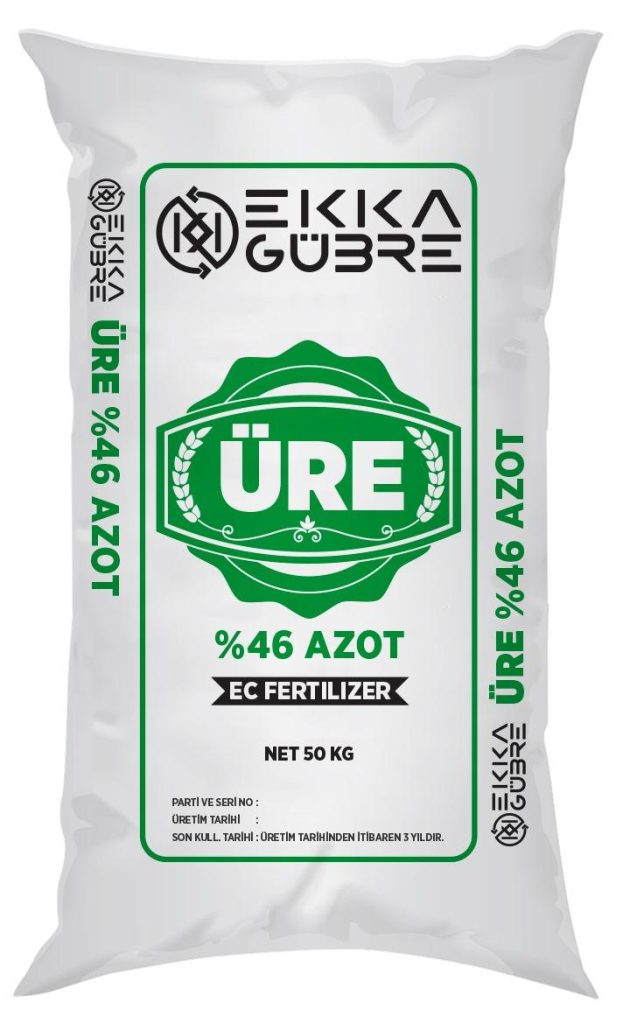

It is a granular, white-coloured fertilizer with the highest nitrogen content among nitrogenous fertilizers, easily soluble in water and highly soluble.
It meets the nitrogen needs of plants by both foliar and soil application.Its formula is CO(NH2)2 – 46% N (nitrogen). It is an amide fertilizer because it contains carbon (C) and the nitrogen in its structure is in the form of NH2. Although it dissolves easily in water, the nitrogen (NH2) it contains is not readily available to plant roots. In order for the nitrogen in it to become useful, the urea bacteria in the soil must convert the urea into ammonium (NH4) nitrogen form through an enzymatic reaction. For this, the temperature of the soil and the amount of urea bacteria in the soil are important. For this reason, urea fertilizer belongs to the slow-acting fertilizer group.
EKKA CAN (Calcium Ammonium Nitrate)
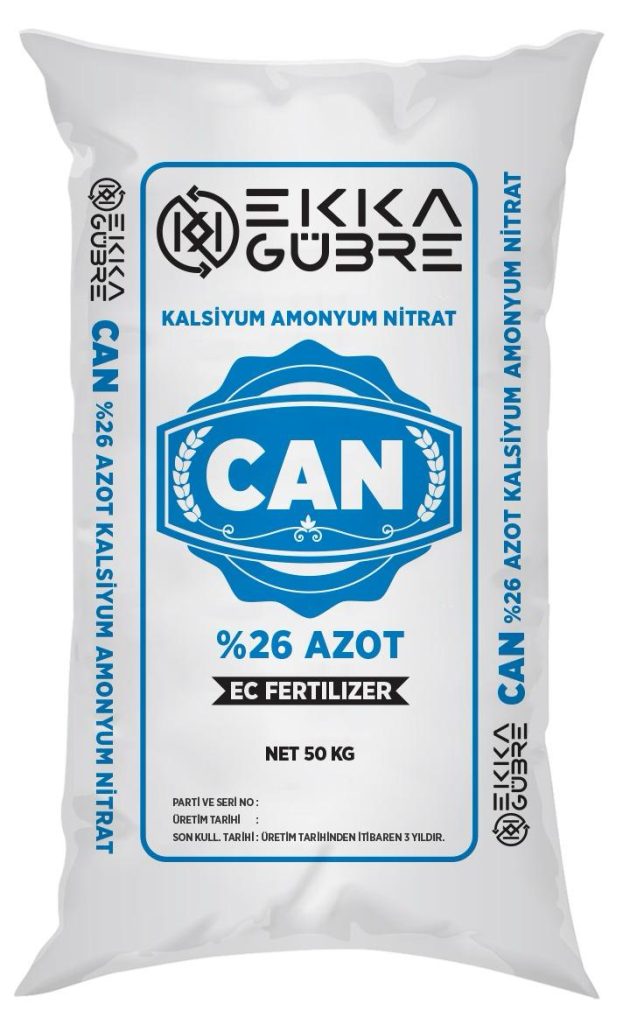
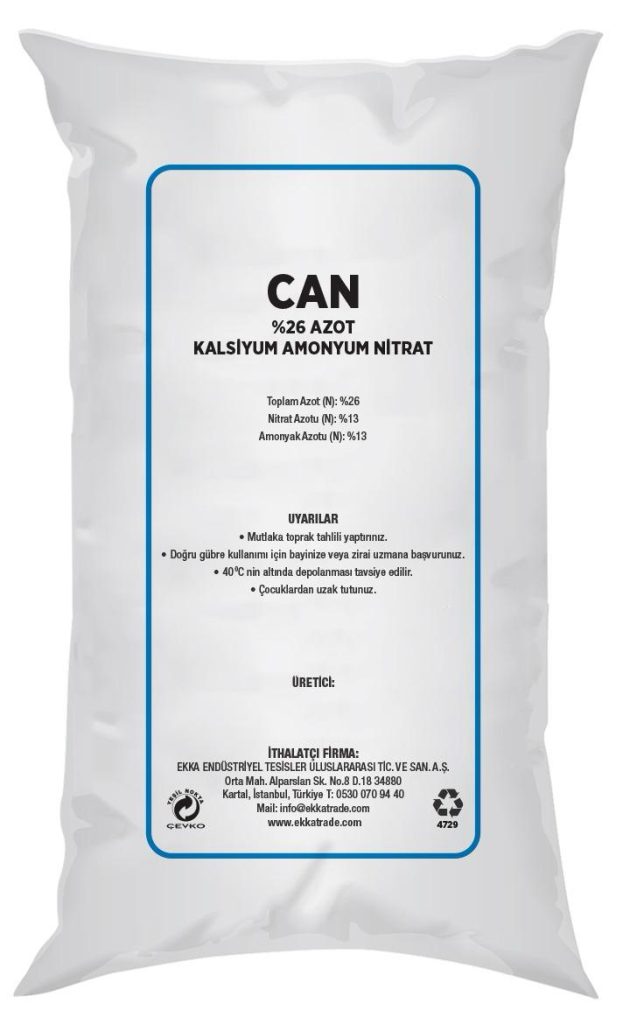
CAN is the most commonly used top fertilizer for fertilizing all plants except rice. It contains 26% nitrogen (N) in its structure.
Half of it is in the form of ammonium (NH4) nitrogen and the other half is in the form of nitrate (NO3) nitrogen. Nitrate nitrogen is quickly taken up by plant roots during rapid growth periods and crop yield periods. Most of the nitrogen in the form of ammonium is converted into nitrate (NO3) nitrogen by nitrogen bacteria in the soil, depending on soil conditions, and plants do not suffer from nitrogen deficiency. 75% of the total nitrogen taken up by all cultivated plants, except rice, during their development period is in the form of nitrate nitrogen. For this reason, Calcium Ammonium Nitrate (CAN) fertilizer is one of the most used nitrogenous fertilizers in our country and in the world as top fertilizer.
EKKA MAP (Mono Amanyum Fosfat)
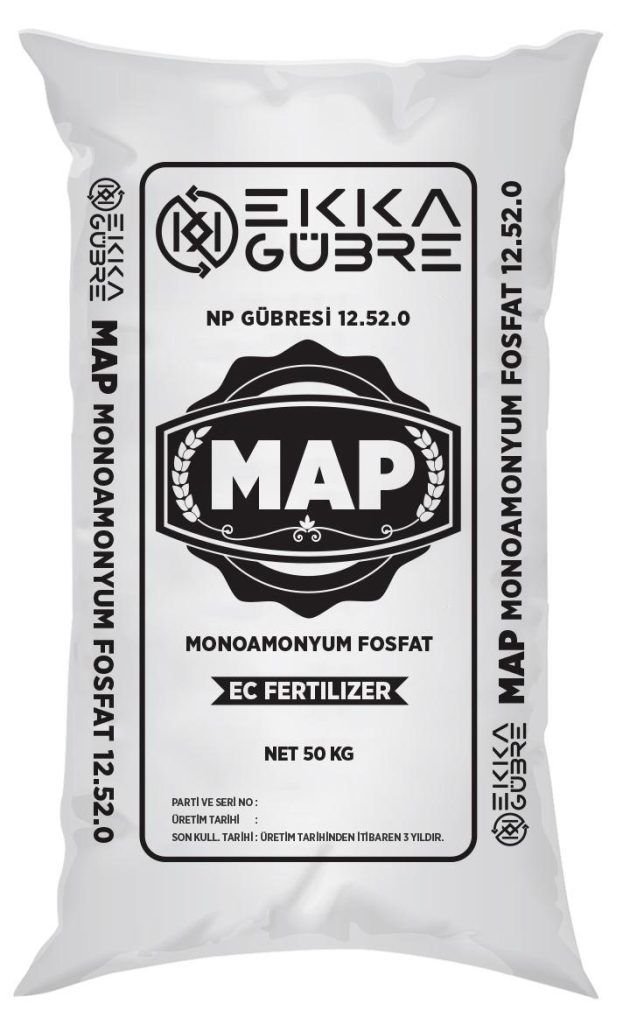
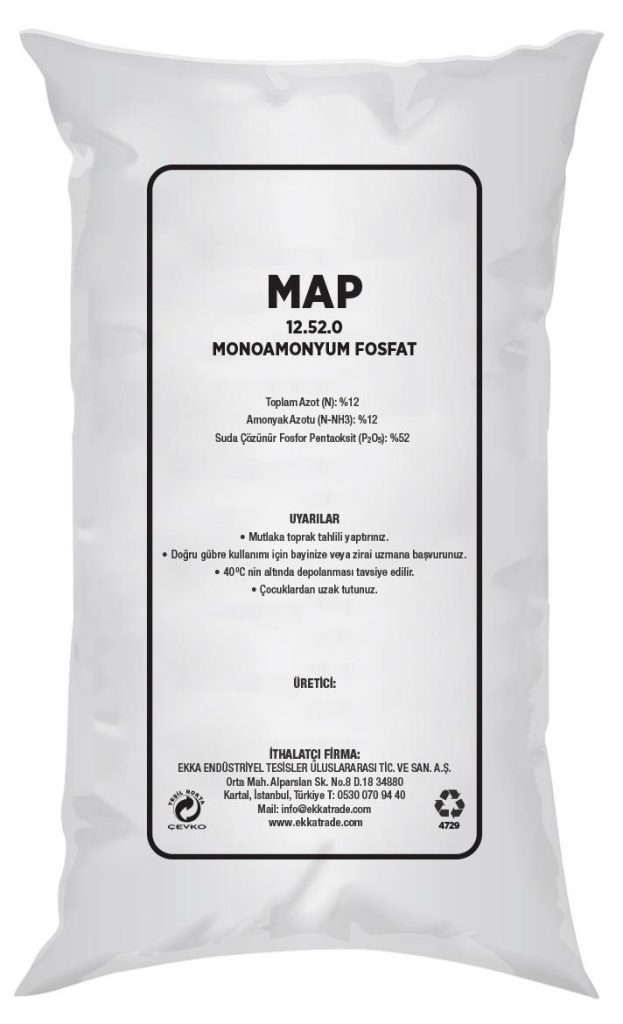
It contains high amounts of phosphorus along with nitrogen. It accelerates the maturation of plants, prevents grain drop and ensures the formation of plump grains. Phosphorus helps the development and spread of the plant’s root system and plays a role in flower and fruit formation. It increases the quality and efficiency of the crop. It increases the plant’s resistance to diseases and pests. It facilitates the uptake of other nutrients from the soil.
Contains Nitrogen (N)12%, Ammonia Nitrogen (N-NH3)12% Water-soluble Phosphorus Pentaoxide (P2O5) 52%
EKKA DAP (Diamonyum Fosfat)
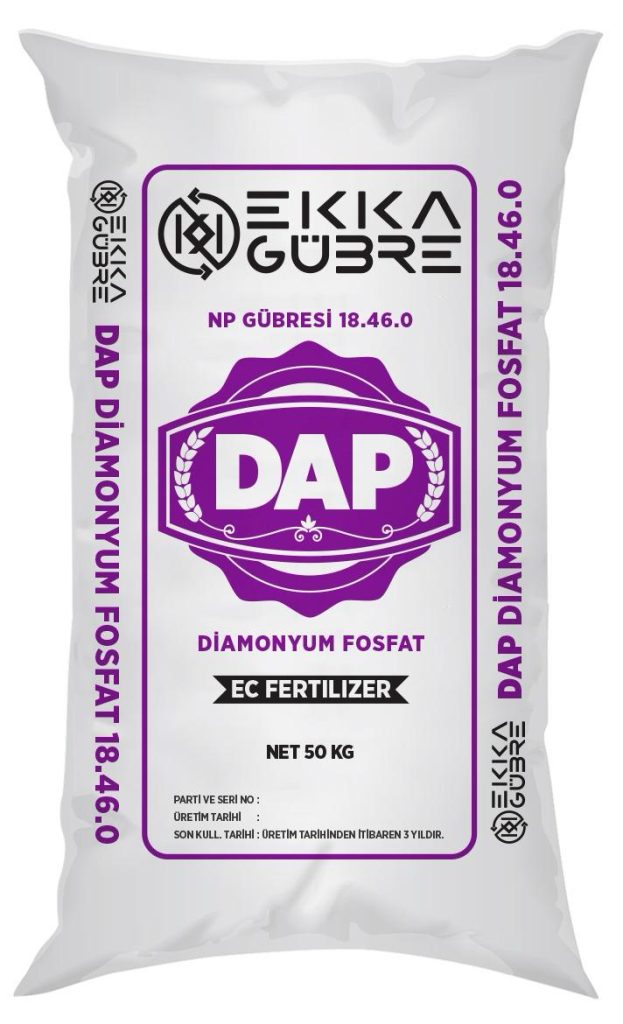

DAP (Diammonium Phosphate) fertilizer is a two-nutrient fertilizer. It contains 18% nitrogen (N) and 46% phosphorus (P).
Since the nitrogen it contains is in the form of ammonium (NH4), it is especially effective in the early growth stages of plants. The amount of nitrogen in its structure may not meet all the needs of the plant when used as subsoil fertilizer. For this reason, when using DAP, the plant must be supported with other nitrogenous fertilizers during top dressing. Nitrogen is retained in the soil because it is in the form of ammonium (NH4). In case of excessive rainfall or excessive irrigation, there is no nitrogen loss through leaching from the soil.
